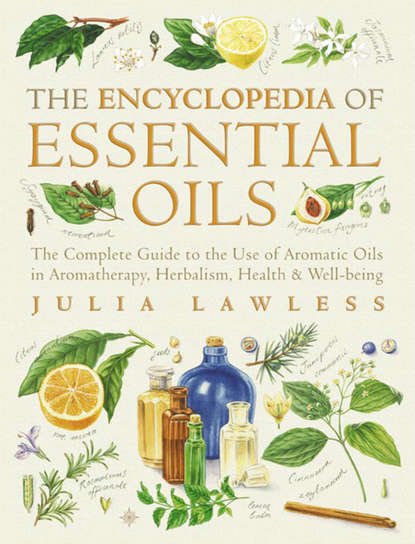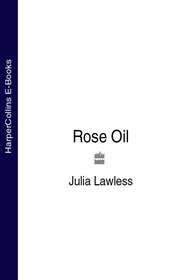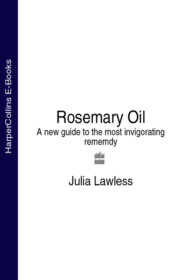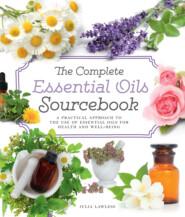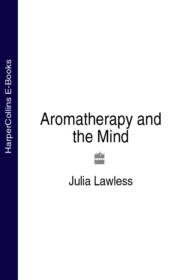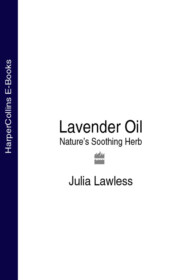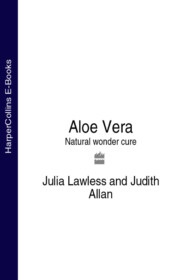По всем вопросам обращайтесь на: info@litportal.ru
(©) 2003-2024.
✖
Encyclopedia of Essential Oils: The complete guide to the use of aromatic oils in aromatherapy, herbalism, health and well-being.
Настройки чтения
Размер шрифта
Высота строк
Поля
HERBAL/FOLK TRADITION A ‘fixed’ oil commonly known as ‘sweet almond oil’ is made by pressing the kernels from both the sweet and bitter almond trees. Unlike the essential oil, this fixed oil does not contain any benzaldehyde or prussic acid, and has many medical and cosmetic uses. It is used as a laxative, for bronchitis, coughs, heartburn and for disorders of the kidneys, bladder and biliary ducts. It helps relieve muscular aches and pains, softens the skin and premotes a clear complexion.
ACTIONS Anaesthetic, antispasmodic, narcotic, vermifuge (FFPA).
EXTRACTION Essential oil by steam distillation from the kernels. The nuts are first pressed and macerated in warm water for 12 to 24 hours before the oil is extracted. It is during this process that the prussic acid is formed; it is not present in the raw seed. Most commercial bitter almond oil is rectified to remove all prussic acid, i.e. free from prussic acid (FFPA).
CHARACTERISTICS Light colourless liquid with a characteristic ‘marzipan’ scent (FFPA).
PRINCIPAL CONSTITUENTS Benzaldehyde (95 per cent), prussic acid (3 per cent).
SAFETY DATA Prussic acid, also known as hydrocyanic acid or cyanide, is a well-known poison. Benzaldehyde is also moderately toxic.
AROMATHERAPY/HOME USE None. ‘Should not be used in therapy either internally or externally.’
OTHER USES Bitter almond oil is no longer used for internal medication. Rectified bitter almond oil is used for flavouring foods, mainly confectionery; the most common uses are ‘almond essence’ and marzipan. The oil (FFPA) is increasingly being replaced by synthetic benzaldehyde in food flavourings.
AMBRETTE SEED (#ulink_41110eb6-4d91-5ad8-a2ff-bccd2fee934d)
Abelmoschus moschatus
FAMILY Malvaceae
SYNONYMSHibiscus abelmoschus, musk seed, Egyptian alcee, target-leaved hibiscus, muskmallow.
GENERAL DESCRIPTION An evergreen shrub about 1.5 metres high, bearing large single yellow flowers with a purple centre. The capsules, in the form of five-cornered pyramids, contain the greyish-brown kidney-shaped seeds which have a musky odour.
DISTRIBUTION Indigenous to India; widely cultivated in tropical countries including Indonesia, Africa, Egypt, China, Madagascar, and the West Indies. Distillation of the oil is generally carried out in Europe and America.
OTHER SPECIES A variety, H. esculentus, is grown largely in Istanbul as a demulcent. Another variety is also found in Martinique, the seeds of which have a more delicate scent.
HERBAL/FOLK TRADITION Generally used as a stimulant and to ease indigestion, cramp and nervous dyspepsia. In Chinese medicine it is used to treat headache; in Egypt the seeds are used to sweeten the breath and are made into an emulsion with milk to be used for itch. The Arabs use the seeds to mix with coffee. Widely used as a domestic spice in the East.
ACTIONS Antispasmodic, aphrodisiac, carminative, nervine, stimulant, stomachic.
EXTRACTION Essential oil by steam distillation of the seeds. Liquid ambrette seed oil should be allowed to age for several months before it is used. A concrete and absolute are also produced by solvent extraction.
CHARACTERISTICS A pale yellowy-red liquid with a rich, sweet floral-musky odour, very tenacious. It blends well with rose, neroli, sandalwood, clary sage, cypress, patchouli, oriental and ‘sophisticated’ bases.
PRINCIPAL CONSTITUENTS Ambrettolide, ambrettolic acid, palmitic acid and farnesol.
SAFETY DATA Available information indicates the oil to be non-toxic, non-irritant and non-sensitizing.
AROMATHERAPY/HOME USE
Circulation muscles and joints: Cramp, fatigue, muscular aches and pains, poor circulation.
Nervous System: Anxiety, depression, nervous tension and stress-related conditions.
OTHER USES Employed by the cosmetic and perfumery industries in oriental-type scents and for the adulteration of musk; also used as a musk substitute. Used for flavouring alcoholic and soft drinks as well as some foodstuffs, especially confectionery.
AMYRIS (#ulink_316a1972-9558-51f4-995d-fa4aa5a4ab23)
Amyris balsamifera
FAMILY Rutaceae
SYNONYMSSchimmelia oleifera, West Indian sandalwood, West Indian rosewood.
GENERAL DESCRIPTION A small bushy tree with compound leaves and white flowers which grows wild in thickets all over the island of Haiti.
DISTRIBUTION Mainly Haiti, it has now been introduced to tropical zones all over the world, e.g. Jamaica, South and Central America.
OTHER SPECIES Not to be confused with East Indian or Mysore sandalwood (Santalum album), to which it bears no relation.
HERBAL/FOLK TRADITION The locals call it ‘candle wood’ because of its high oil content; it burns like a candle. It is used as a torch by fishermen and traders. It also makes excellent furniture wood.
ACTIONS Antiseptic, balsamic, sedative.
EXTRACTION Essential oil by steam distillation from the broken-up wood and branches. Best if the wood is seasoned first. It provides a very plentiful yield.
CHARACTERISTICS A pale yellow, slightly viscous liquid with a musty, faintly woody scent, quickly fading away. It blends well with lavandin, citronella, oakmoss, sassafras, cedarwood and other wood oils.
PRINCIPAL CONSTITUENTS Caryophyllene, cadinene and cadinol.
SAFETY DATA Generally non-irritant; no other information available at present.
AROMATHERAPY/HOME USE Perfume.
OTHER USES As a cheap substitute for East Indian sandalwood in perfumes and cosmetics, although it does not have the same rich tenacity; chiefly employed as a fixative in soaps. Limited application in flavouring work, especially liqueurs.
ANGELICA (#ulink_5efb3f7f-d916-58cc-8c02-5fab406d853b)
Angelica archangelica
FAMILY Apiaceae (Umbelliferae)
SYNONYMSA. officinalis, European angelica, garden angelica.
GENERAL DESCRIPTION A large hairy plant with ferny leaves and umbels of white flowers. It has a strong aromatic scent and a large rhizome.
DISTRIBUTION Native to Europe and Siberia, cultivated mainly in Belgium, Hungary and Germany.
OTHER SPECIES There are over thirty different types of angelica but this is the most commonly used medicinally. see Botanical Classification (#litres_trial_promo) section.
HERBAL/FOLK TRADITION This herb has been praised for its virtues since antiquity.
Angelica
It strengthens the heart, stimulates the circulation and the immune system in general. It has been used for centuries in Europe for bronchial ailments, colds, coughs, indigestion, wind and to stimulate the appetite. As a urinary antiseptic it is helpful in cystitis and is also used for rheumatic inflammation. The Chinese employ at least ten kinds of angelica, well known for promoting fertility, fortifying the spirit and for treating female disorders generally; it has a reputation second only to ginseng. It is current in the British Herbal Pharmacopoeia as a specific for bronchitis associated with vascular deficiency. Candied Angelica stalks are popular in France and Spain.





